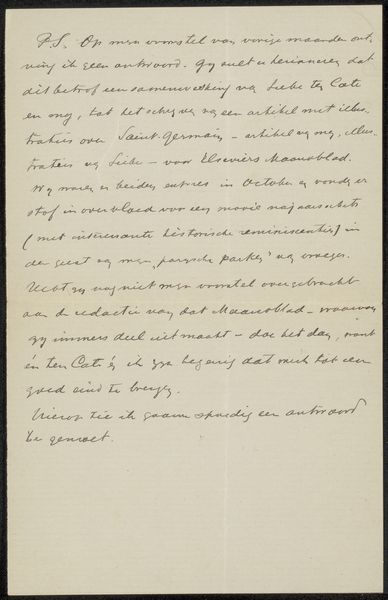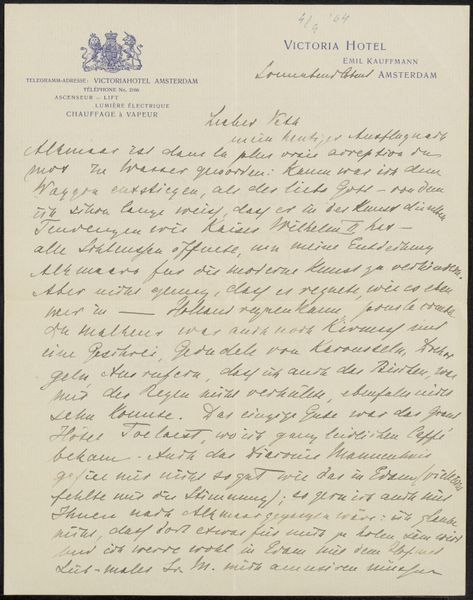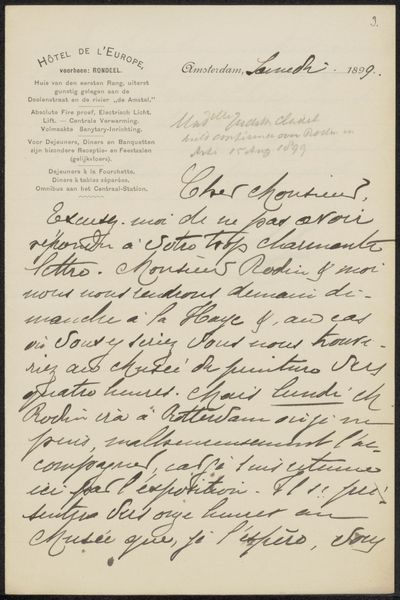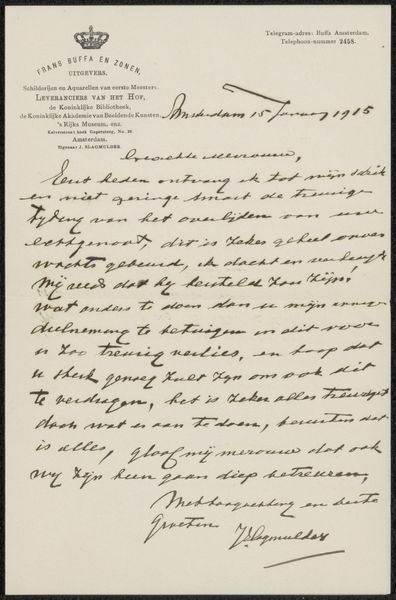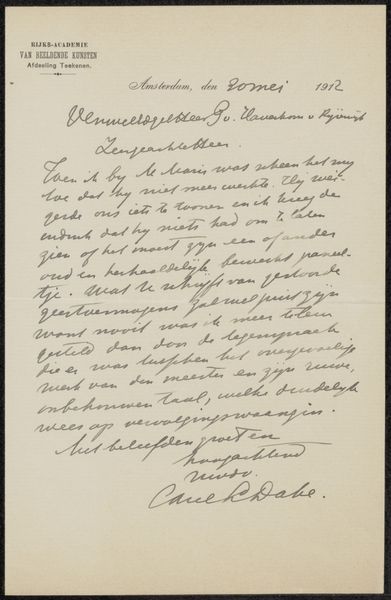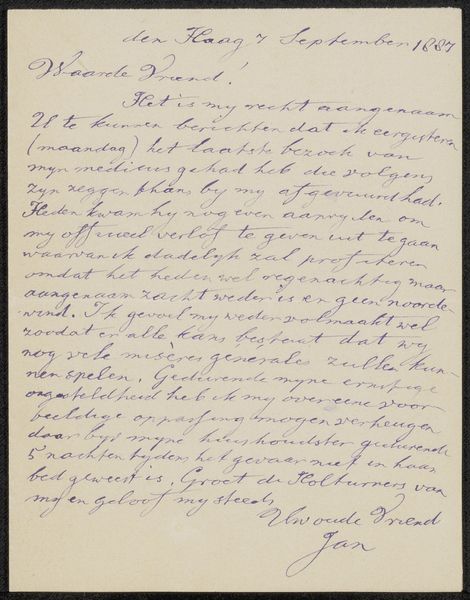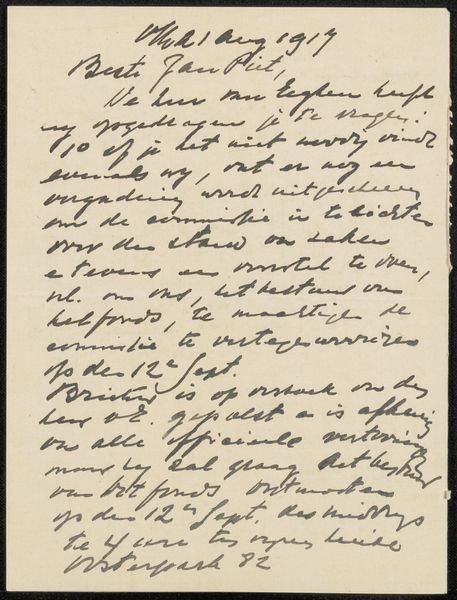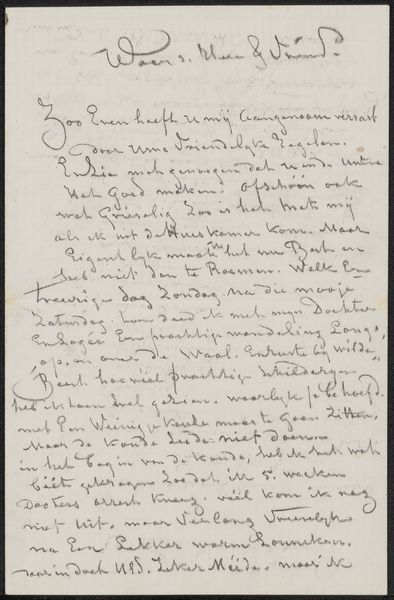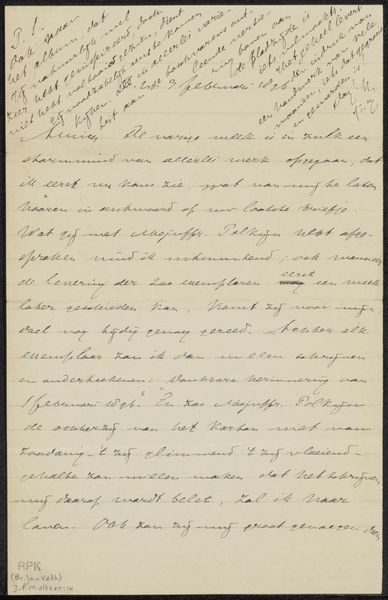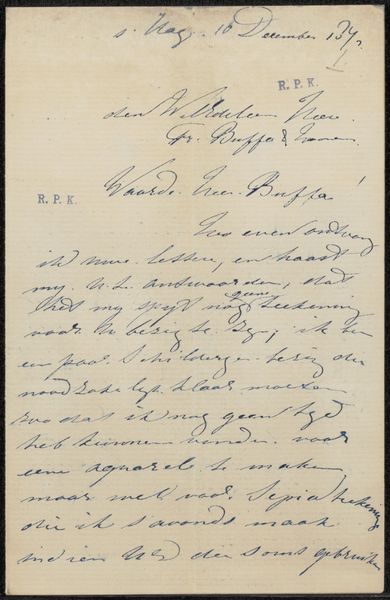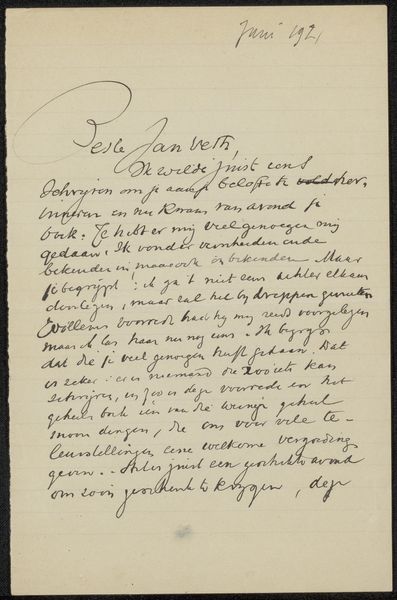
drawing, paper, ink
#
drawing
#
hand-lettering
#
hand lettering
#
paper
#
ink
Copyright: Rijks Museum: Open Domain
Curator: This piece, "Brief aan Pieter Haverkorn van Rijsewijk," possibly from between 1910 and 1927, from Frans Buffa en Zonen, uses ink on paper. What are your initial thoughts? Editor: It's fascinating! My first impression is one of intimacy. It's literally a handwritten letter. How do you interpret this work as a historical object? Curator: Well, the act of writing itself becomes an important focal point. Before email and mass communication, letters carried weight, shaping personal relationships and impacting trade networks. Here, we must consider how this letter functioned within a particular network of art dealers and collectors, a very specific social class and their engagement with the art market in Amsterdam and beyond. Editor: It looks like a business correspondence. Is it common to see handwritten letters displayed as art? Curator: What do you mean by ‘art’? This is not 'art' in the traditional sense, no. But, it offers a glimpse into a commercial art world, a dialogue around sales, taste, and even networks of power. Its aesthetic lies not in a grand painting, but in the deliberate script, the stationery's design, and the very materiality that would dictate its worth. Editor: So, the medium itself is part of the message. Is it typical to analyze something so seemingly mundane as having this much historical impact? Curator: Absolutely! This connects directly to our current understanding of how power, money, class and societal networks come together in order to support (or not) different expressions of the creative output, as well as defining their very survival through purchases, reviews and reselling channels. The story isn't just what the letter *says*, it's *how* it says it, and *who* it involves. What has this short glimpse into a past time offered you in terms of today’s dialogue around commercial success and artistic creation? Editor: I now understand it can serve as a reminder that behind every artwork are complex human stories, market dynamics, and relationships. That changes how I will interpret it. Thank you!
Comments
No comments
Be the first to comment and join the conversation on the ultimate creative platform.
